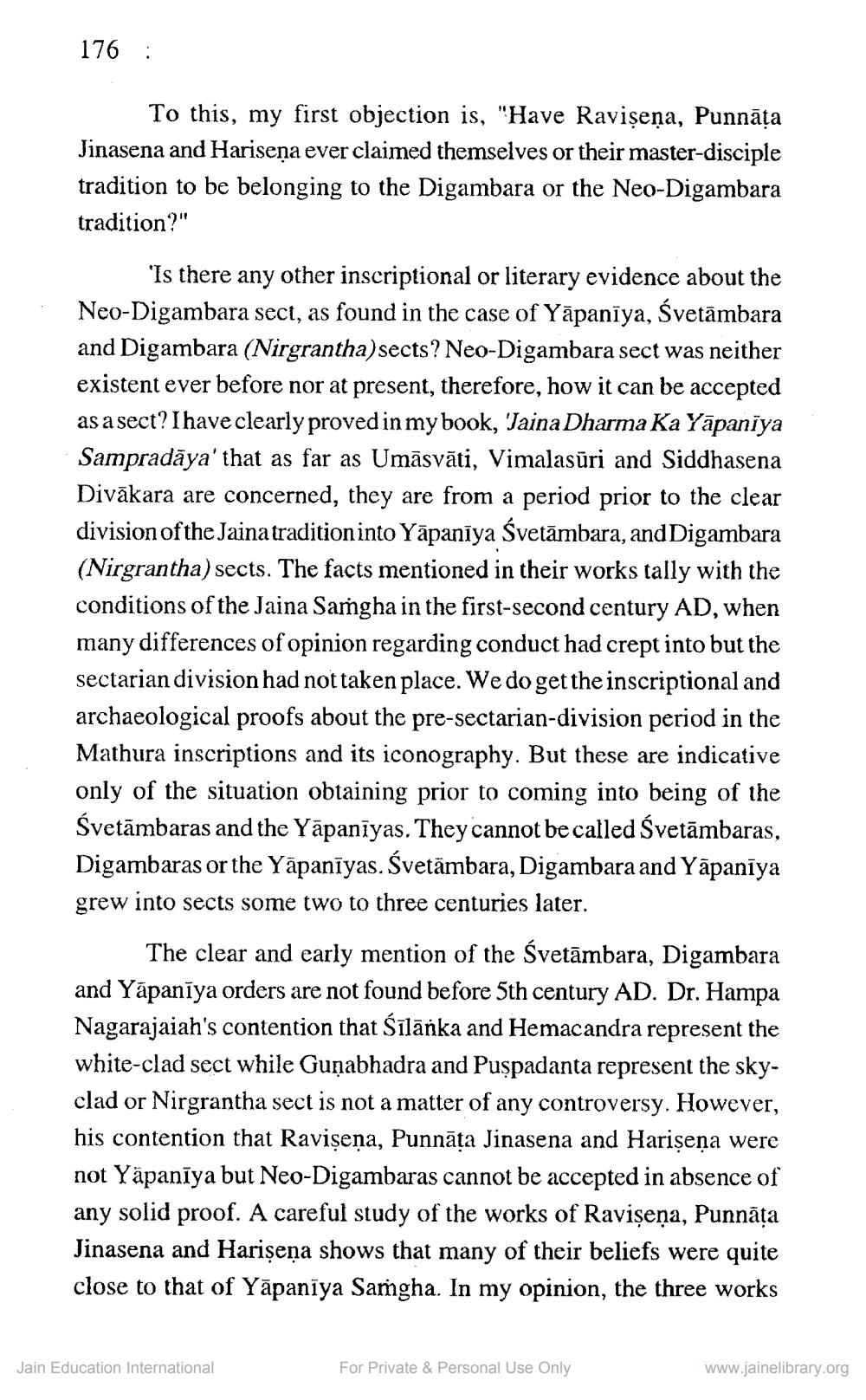________________
176
:
To this, my first objection is, "Have Ravişeņa, Punnāta Jinasena and Hariseņa ever claimed themselves or their master-disciple tradition to be belonging to the Digambara or the Neo-Digambara tradition?"
'Is there any other inscriptional or literary evidence about the Neo-Digambara sect, as found in the case of Yāpanīya, Svetāmbara and Digambara (Nirgrantha) sects? Neo-Digambara sect was neither existent ever before nor at present, therefore, how it can be accepted as a sect? I have clearly proved in my book, Jaina Dharma Ka Yāpaniya Sampradāya' that as far as Umāsvāti, Vimalasūri and Siddhasena Divākara are concerned, they are from a period prior to the clear division of the Jaina tradition into Yāpanīya Śvetāmbara, and Digambara (Nirgrantha) sects. The facts mentioned in their works tally with the conditions of the Jaina Samgha in the first-second century AD, when many differences of opinion regarding conduct had crept into but the sectarian division had not taken place. We do get the inscriptional and archaeological proofs about the pre-sectarian-division period in the Mathura inscriptions and its iconography. But these are indicative only of the situation obtaining prior to coming into being of the Svetāmbaras and the Yāpanīyas. They cannot be called Svetāmbaras, Digambaras or the Yāpanīyas. Svetämbara, Digambara and Yāpaniya grew into sects some two to three centuries later.
The clear and early mention of the Svetāmbara, Digambara and Yāpanīya orders are not found before 5th century AD. Dr. Hampa Nagarajaiah's contention that Śīlānka and Hemacandra represent the white-clad sect while Gunabhadra and Puspadanta represent the skyclad or Nirgrantha sect is not a matter of any controversy. However, his contention that Ravişeņa, Punnāta Jinasena and Harișeņa were not Yapanīya but Neo-Digambaras cannot be accepted in absence of any solid proof. A careful study of the works of Ravişeņa, Punnāța Jinasena and Harișeņa shows that many of their beliefs were quite close to that of Yāpanīya Samgha. In my opinion, the three works
Jain Education International
For Private & Personal Use Only
www.jainelibrary.org




